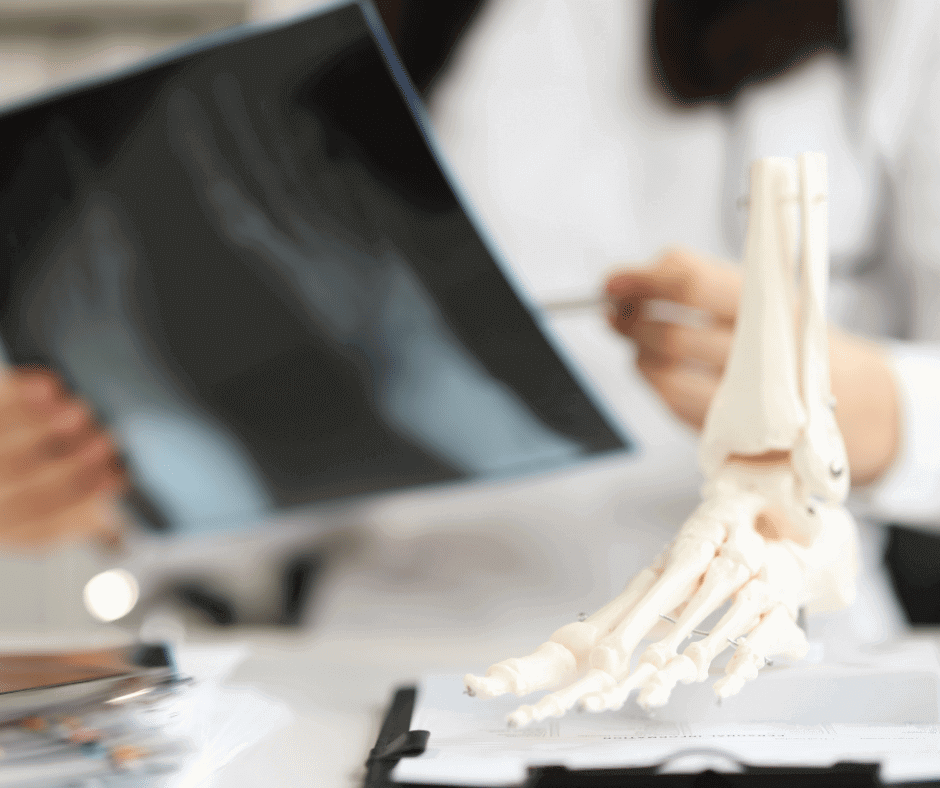Within our Classification and Grouping Guide, we explain a comprehensive set of regulations for the categorization and grouping of medical devices. These regulations are fully explained in the 1725 of 2005 decree, specifically in Article No. 5.
In this publication, we will delve on the strategies employed in the classification and grouping of bone substitutes; following a concise explanation of what are bone substitutes, as well as providing the classification and grouping guidelines within the Colombian regulatory framework.
General Characteristics of Bone Substitutes
Bone substitute medical devices are specialized materials or implants used commonly in orthopedic and dental surgeries to replace or augment damaged or missing bone tissue. These devices facilitate the repair and restoration of bone structure and function. They are commonly employed in various clinical scenarios, including trauma surgery, joint replacements, spinal fusions, and dental implant procedures.
There are various types of bone substitutes, often categorized into three groups: bone grafts, ceramics, and growth factors.
- Bone grafts:
- Autografts: Bone grafts harvested from the patient’s own body, usually from the iliac crest (hipbone).
- Allografts: Bone grafts obtained from cadaveric donors. They are processed and sterilized to remove potential contaminants.
- Xenografts: These are bone substitutes are derived from animals, typically bovine (cow) or porcine (pig) sources.
- Ceramics: Artificial materials made of ceramics, polymers, or a combination of both. Examples include calcium phosphate ceramics (e.g., hydroxyapatite), calcium sulfate, and biodegradable polymers. Synthetic substitutes can be designed to mimic the structure and properties of natural bone. Some are osteoconductive, meaning they provide a scaffold for new bone growth, while others may be osteoinductive, promoting bone formation.
- Bone Growth Factors: These are growth factors that stimulate molecules that play a role in regulating various cellular processes, including cell proliferation, differentiation, and tissue repair. Growth factors are used to stimulate the body’s natural healing processes. Examples include Bone Morphogenetic Proteins (BMPs) and Platelet-Derived Growth Factor (PDGF).
Classification According to the Level of Risk
Bone substitutes, within all the mentioned variations, fall under the Class III medical devices, according to the Colombian regulatory framework, as they are implants that have bioactive effects once implanted on the patient. It is important to note that if the raw material used to manufacture the device is hydroxyapatite, the product is considered to have a biological effect (only if it is declared and demonstrated by the manufacturer).
Grouping for Sanitary Registration Purposes
When attempting to group different medical devices into one sanitary registry, Article No. 28 of the Decree 4725 of 2005 must be considered. The following criteria should be taken into account:
- To group different references within the same registration, they must maintain consistency in:
- Device classification
- Intended use or indication
- Generic denomination
- Registration holder
- Manufacturer
- There may be differences in material characteristics if they do not modify the intended use or indication. (i.e. a “plug” or “cube” variation of the same product could be grouped within the same registration).
Conclusion
This guideline can serve to distinguish the type of bone substitute and an effective regulatory approach, given that the attributes and characteristics of bone substitutes are clearly delineated, and they typically do not rely on additional accessories or other medical equipment to fulfill their intended purpose.
If you require further assistance in understanding any of the requirements discussed in this article, please contact us at contact@veraqueconsulting.com or check out our guidelines.

